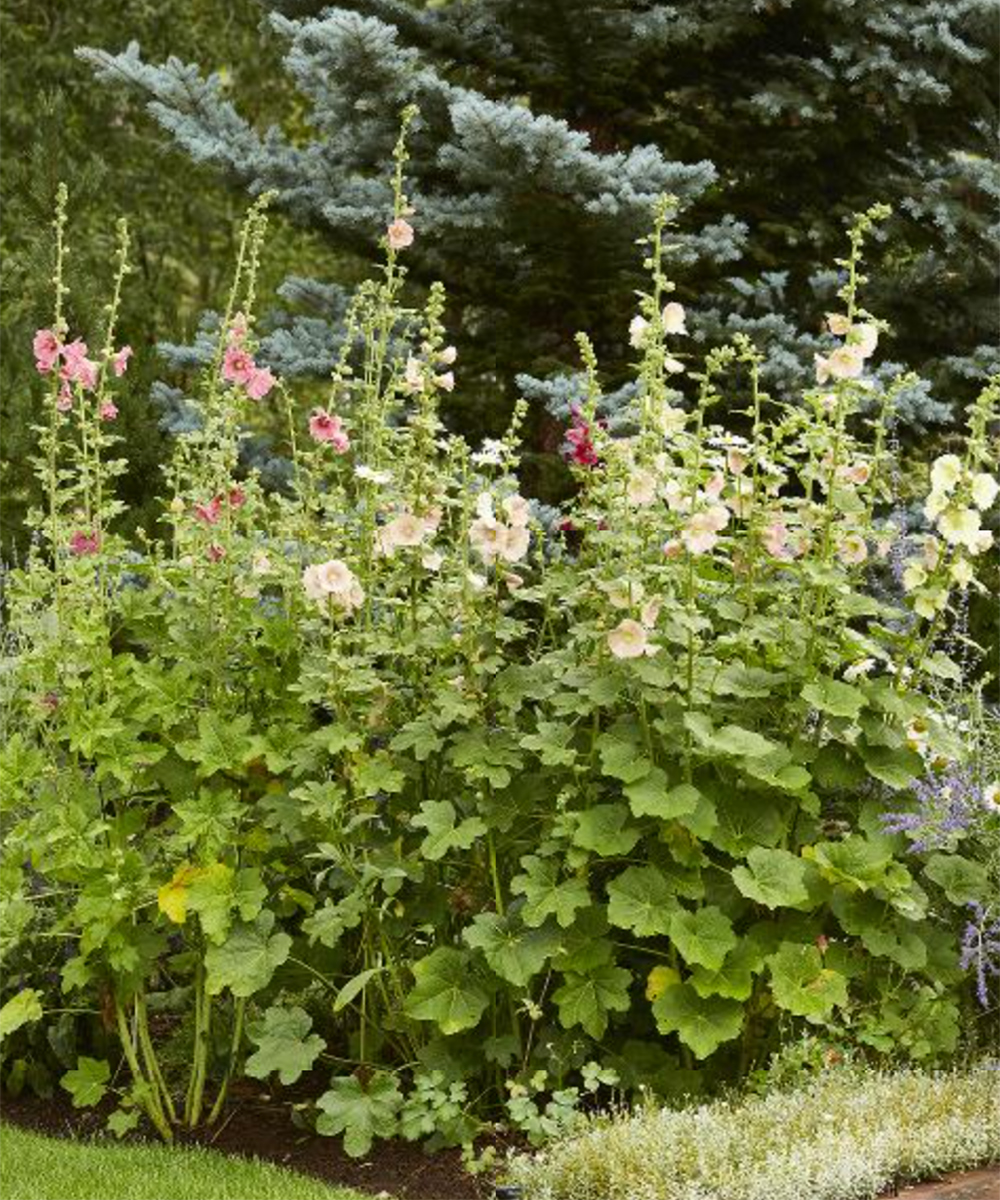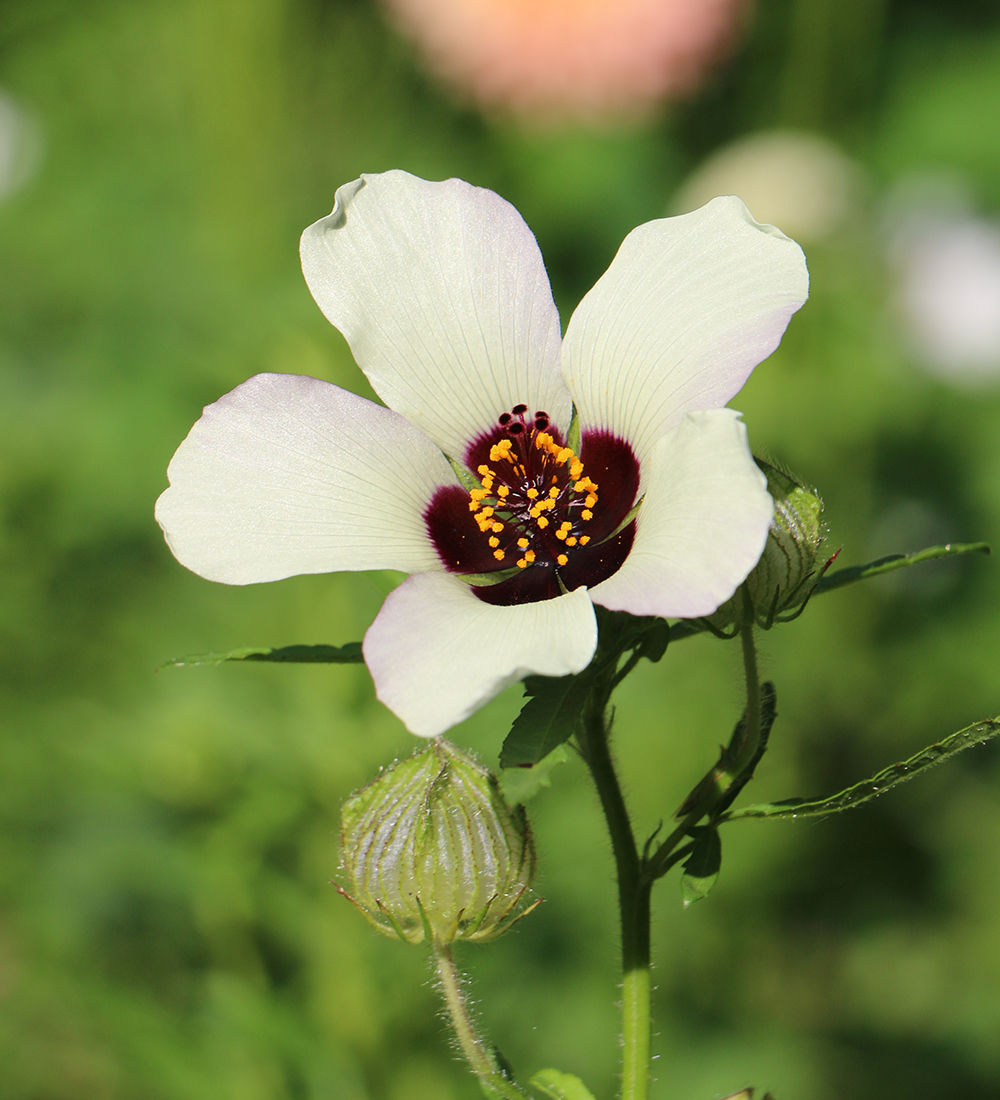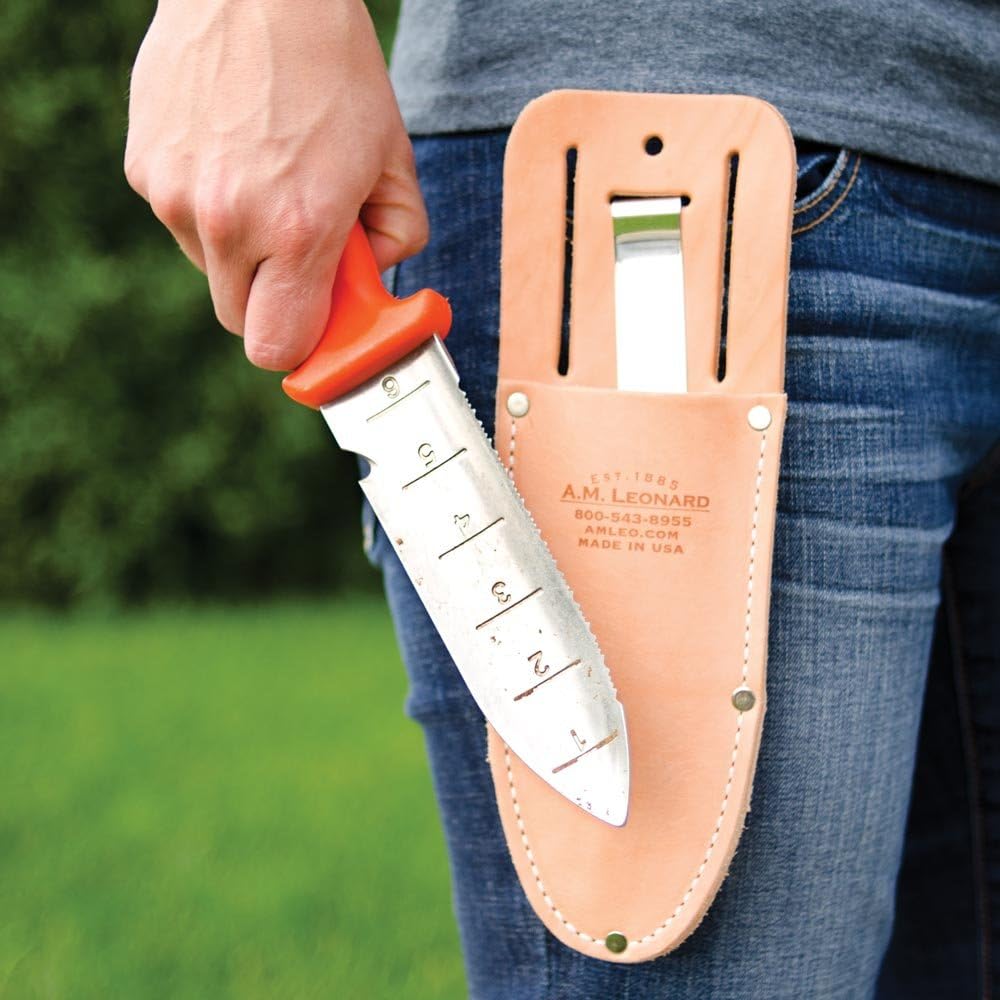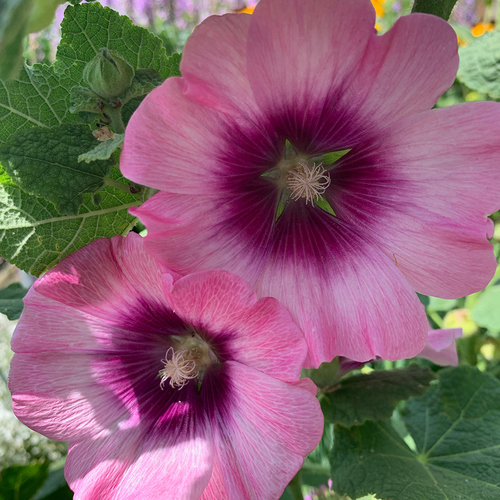Let’s face it. If you haven’t figured it out already, hollyhocks (Alcea spp. and cvs., Zones 3–9) can be difficult to please. You are not alone if you’ve dreamed of that English-cottage-meets-Munchkinland look of a border filled with magical tall hollyhocks. But the reality is that they are more challenging than you might have been led to believe, though this doesn’t mean you shouldn’t try.
If you have a sunny site with rich, well-draining soil and good air circulation (and perhaps a good witch on your side) you can absolutely grow amazing hollyhocks. The rest of us will do best if we approach their culture more like scientists and less like casual gardening influencers who might simply write, “They’re easy, self-sowing, and need little care.” I hate to be the one to tell you—they are anything but.
Why hollyhocks became high-maintenance
However, there was a time long, long ago—perhaps in the 1880s—when it seemed that nearly every farmhouse had a stand of tall, gorgeous, self-seeding hollyhocks. This quickly came to an end when a disease spread across the land, worse than any flying monkey: hollyhock rust (Puccinia malvacearum). This pathogen is nearly unavoidable regardless of where you garden, except perhaps in the desert or in areas where summers are dry and not humid. The only issue is that those happen to be the conditions hollyhocks dislike; they prefer rich, loamy soils and the four-season climate of the north.
But all hope is not lost. If you truly love hollyhocks, there are some methods that might not prevent the inevitable rust entirely but can delay its appearance or at least slow it down before the season ends.
Sourcing and starting hollyhock seeds

For your best chance at success, it’s a good idea to start with fresh seed, not seed from a friend or a questionable source. Professional seed is often hot-water treated to destroy and infection or reduce the chances that the seed is already infected. A good source for seeds is the Germany-based company Jelitto Perennial Seeds, which offers many named varieties. It’s safer to start with a variety that is considered rust resistant, but there is no variety that is immune to the hollyhock rust. There are also no home remedies to help avoid the rust.
When sowing, place two to three seeds in a 3-inch pot, and remove all but one seedling per pot once they germinate. It is advisable to keep the plants warm and bright, either under lights indoors or in a protected area like a sunporch until they grow larger. Set them in the garden in early June, thereby delaying any exposure to spores that can cause rust. Try to keep the foliage dry by avoiding overhead watering, although rain is acceptable. Hollyhocks are heavy feeders, so fertilize regularly to keep the plants as healthy and robust as possible. If you are starting with seedlings, expect them to bloom in their second year, and perhaps again in their third year if you won the hollyhock lottery.

If you are in a hurry and don’t mind taking a shortcut, you could buy plants that are already in bud. Be aware that they will often be shy bloomers and never as tall and impressive as established hollyhocks. Nursery-bought plants are also more likely to have already been exposed to rust but may have been treated with a fungicide. Before purchasing, examine each leaf, both top and underside, to ensure you don’t see any signs of orange-brown spots.
Planting hollyhock

The planting bed for hollyhocks should be an open area, where they will look natural. It’s essential to know that a perennial border is perhaps the worst place to plant a hollyhock, as close neighbors will only encourage moisture and rust problems. Instead, dedicate a separate bed just for them in an open space. This will ensure good air circulation, make staking easier, and help keep the foliage dry as breezes will quickly evaporate the morning dew.
Avoid growing any other plants in the Malvaceae family near your hollyhocks as they are also susceptible to hollyhock rust. This includes flowering maples (Abutilon spp. and cvs., Zones 8–11), okra (Abelmoschus esculentus), and hibiscus (Hibiscus spp. and cvs., Zones 8–11). Also learn about any native weeds in the same family, as these can act as a vector for the fungus.

Maintenance to prevent hollyhock rust
The only guaranteed method to effectively control rust is to treat the plant with a fungicide before any signs of rust appear (afterward is too late). This requires spraying your plants weekly to every eight days—something few of us would dream of doing.
Alternatively, you can employ defensive measures through sanitation. While many of us have embraced the benefits of not cleaning up the garden, practicing new methods such as cut and drop and leave the leaves, hollyhocks will benefit from good garden cleanup. Rust spores can overwinter on infected plant debris and easily spread to new foliage in the spring. Strict garden cleanup and keeping an eye out for early signs of rust can reduce or delay the effects of this fungus. If you see rust, remove any affected parts of the plant (this means any leaves with orange spots on them) and then destroy the plant material by either burning it or tossing it in the trash, but never in the compost pile.
Learn more about hollyhocks and other self-sowers:
Discuss this article or ask gardening questions with a regional gardening expert on the Gardening Answers forum.
And for more Northeast regional reports, click here.
Matt Mattus is the author of two books: Mastering the Art of Flower Gardening and Mastering the Art of Vegetable Gardening. He gardens in Worcester, Massachusetts.
Fine Gardening Recommended Products

A.M. Leonard Deluxe Soil Knife & Leather Sheath Combo
Fine Gardening receives a commission for items purchased through links on this site, including Amazon Associates and other affiliate advertising programs.
MULTITASKING DUAL EDGES: a deep serrated edge and a tapered slicing edge ideal for tough or delicate cuts. DURABLE 6-inch stainless steel blade withstands 300 lbs of pressure. TWINE CUTTING NOTCH, DEPTH GAUGE MARKINGS & spear point – no need to switch tools when using this garden knife. LEATHER SHEATH: heavy duty, protective, clip on sheath to keep your knife convenient and secure. LIFETIME WARRANTY.

